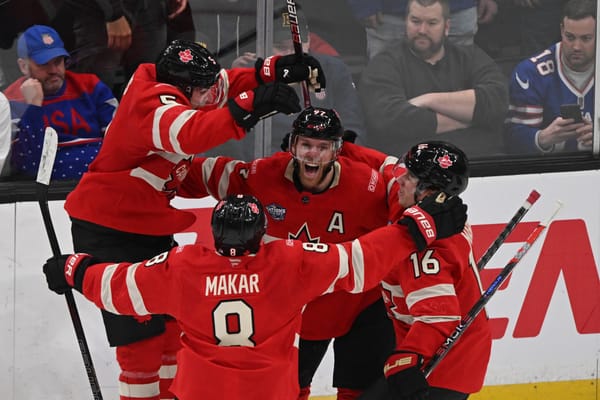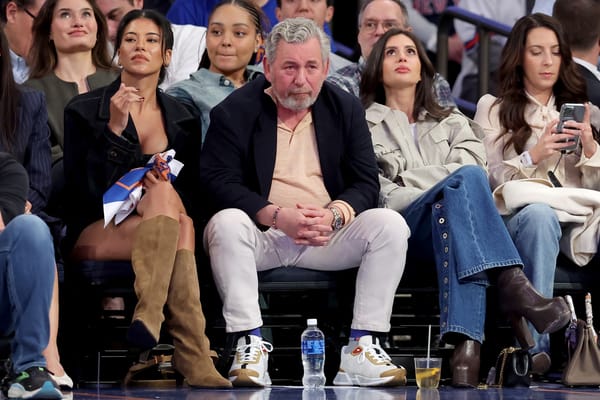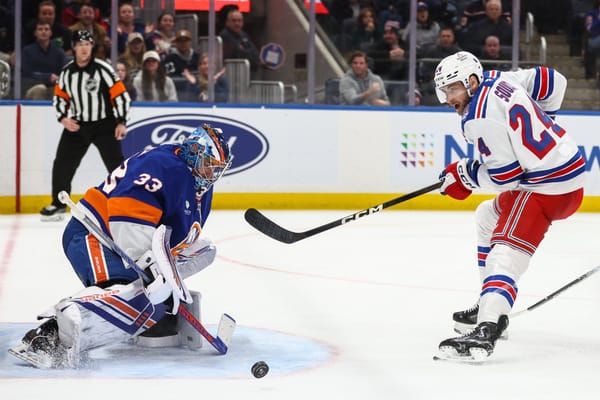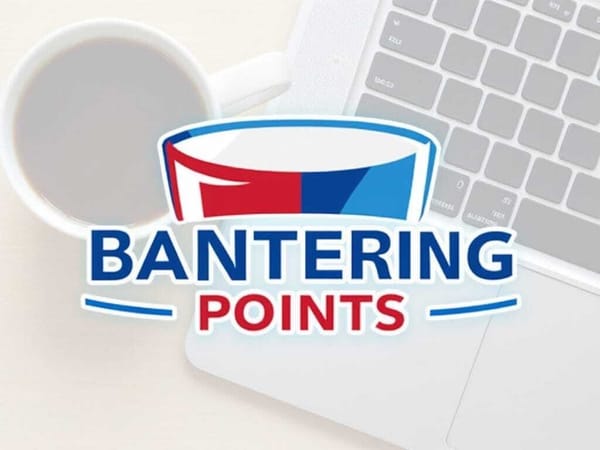What the New York Rangers’ Salary Cap Situation Could Look Like After Remaining RFA Deals
The Rangers could chose to settle their RFA business before the secondary buyout window opens, and then make the necessary moves to become cap compliant.
With Jacob Trouba signed, the New York Rangers currently have $82,406,466 in salary committed to 22 players. This puts the franchise $906,466 in the red, and the focus will now shift to their remaining restricted free agents.
Pavel Buchnevich is the player who will likely be first up, as the two sides currently have an arbitration date scheduled for July 29, though the two sides will likely settle before that.
But if the Rangers were to work backwards and take care of Tony DeAngelo, Brendan Lemieux, and then Buchnevich, what would their salary cap situation look like ahead of the secondary buyout window?
Cap Friendly currently has both Brendan Smith and Matt Beleskey listed on the Rangers’ roster, while forward Vitali Kravtsov is penciled in the AHL. Instead, I reversed that, with Kravtsov likely being in New York come October, with Smith and Beleskey residing in Connecticut.
He’s also not included above, but this also assumes Vinni Lettieri signs for under $1 million and is also a member of the Wolf Pack this season.
Assuming Buchnevich comes in at $3 million, DeAngelo around $2.5 million, and Lemieux $1 million, that’s a total of $6.5 million added to the cap. Kravtsov’s entry-level deal on the books brings the total to $7,425,000, while the team saves $2.15 million by stashing Beleskey and Smith in Hartford.
In total, this configuration has the team over the salary cap by $4,506,466 — also factoring in potential bonuses — so there will have to be multiple moves made to become cap compliant. Here’s some quick math on some likely moves, and what it would mean for the team’s cap situation.
If the Rangers bought out...:
- Kevin Shattenkirk, the team would have $660,201 in space
- Marc Staal, the team would be $1,706,466 in the red
- Smith, the team would be $2,202,299 in the red
- Shattenkirk and Staal, the team would have $3,460,201 in space
- Shattenkirk and Smith, the team would have $2,964,368 in space
- Staal and Smith, the team would have $597,701 in space/
It is important to note that the Rangers can no longer buyout Ryan Strome for 1⁄3 of the remainder of his contract, because the minimum salary for a buyout during the secondary window is $3,455,438. Had they bought him out during the first window, the team would have saved $2,666,667.
Also, while a buyout of Shattenkirk — something that doesn’t make long-term financial sense — would put the team back in the black, the team would have a roster of 21 and no spare defenseman.
All of this means that the Rangers will need to make moves in addition to a buyout, and prime candidates include Vlad Namestnikov ($4 million), Strome ($3,100,000), and potentially Chris Kreider ($4,625,000).
There’s also the slim chance Jeff Gorton finds a taker for one of the buyout candidates listed in a trade, and if that were to happen he’d be a damn wizard. In a perfect world the Rangers would be able to buyout a defender like Staal, replace him with a cheap veteran currently unsigned, and move one of Namestnikov or Strome with salary retention.
It could be uncomfortable, but if the Rangers could start the season with anywhere from $1 million to $2 million in space, that would allow them time to make a decision on Kreider.
Related
What If The New York Rangers Just Bought Out Marc Staal?
The last thing the team wants to do is trade Kreider just because they are up against the cap. That would limit their ability to get a meaningful return, and in such a situation it would be better to hold onto him to start the season and then re-assess at a later date.
On the flip side, if they are able to find a way to fill out a 22-player roster with some room to spare, that opens up the possibility to consider signing Kreider to an extension as long as the term and dollars are reasonable.
There’s value in having a forward like Kreider on the roster in a secondary role, but it all comes down to what he wants, and where it lines up with the team’s contention window.
In other words, the Rangers could operate with little margin for error this season, and then when money leaves their cap they can take care of other business. Things could get dicey with rookie performance bonuses, but there’s no way to really project what kind of situation the team will end up in.
A trade of Kreider still feels like the likeliest outcome given the glut of forwards on the roster, but it would be better for that decision to ultimately be made when they had some breathing room financially.
The nuances of both sides of this debate are best saved for another day, because you can make a strong case for keeping or trading Kreider based on what else the Rangers do financially.
The bottom line is that the Rangers are going to have to get creative to open space and then fill out the remainder of their roster. There aren’t going to be teams wanting to do them favors, and there’s already a short list of teams who can absorb salary.
Buyouts won’t completely solve the team’s problems, and it will require the team’s brain trust to make some tough decisions with players on the roster.
If you were Gorton, how would you proceed with the remaining RFAs? How would you handle the buyout window? Would you trade someone who wasn’t mentioned? There’s certainly a number of ways things can go, and I’d love to hear your suggestions.





